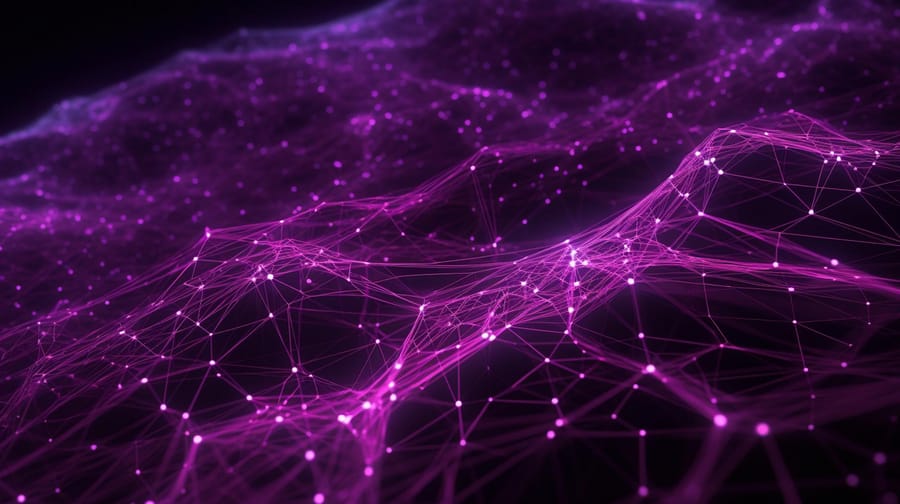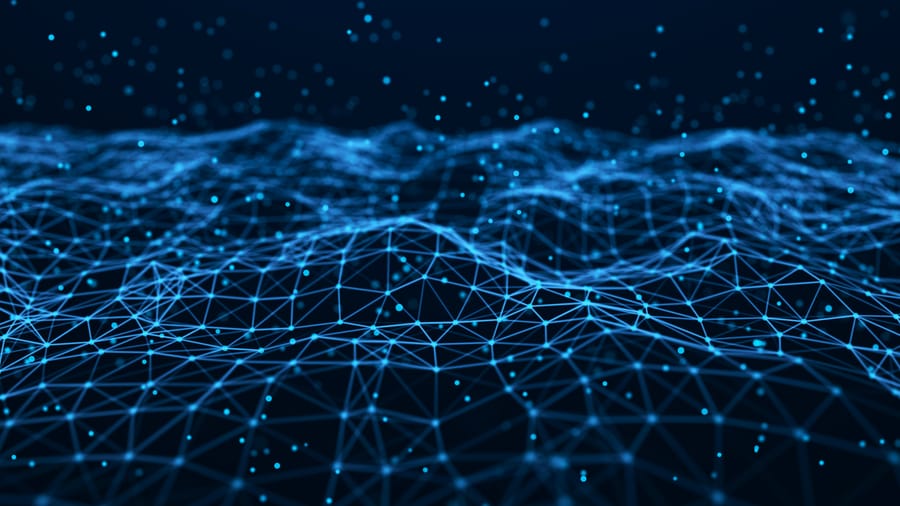The evolution of learning machines, a cornerstone of Artificial Intelligence (AI), represents one of the most transformative developments in modern science and technology. From rudimentary rule-based systems to sophisticated pattern recognition models capable of processing vast datasets, the trajectory of AI reflects both technological innovation and shifting conceptual paradigms. Defining AI in academic literature is a complex task, as the term encompasses a range of interpretations, from narrow task-specific algorithms to ambitious visions of general intelligence. This essay provides a critical overview of how AI is defined in academic discourse, tracing the development of learning machines from simple models to complex systems. It draws on foundational and contemporary scholarly sources to explore the conceptual, technical, and philosophical dimensions of AI’s evolution.
The development of learning machines began with simple models rooted in logic and rule-based systems. Early AI, such as the Logic Theorist (Newell & Simon 1956), relied on hand-crafted rules to solve mathematical proofs. These systems, while groundbreaking, were limited by their rigidity and inability to adapt to new contexts. The introduction of perceptrons by Rosenblatt (1958) marked a shift towards learning models. Inspired by neural networks, perceptrons adjusted weights based on input-output pairs, enabling rudimentary pattern recognition. However, Minsky and Papert’s (Minsky & Papert 1969) critique of perceptrons’ limitations, particularly their inability to solve non-linear problems, temporarily stalled neural network research. The resurgence of neural networks in the 1980s, driven by backpropagation (Rumelhart et al. 1986), transformed learning machines. Backpropagation allowed multi-layered networks to learn complex patterns by iteratively adjusting weights, overcoming earlier limitations. This breakthrough paved the way for modern deep learning, which underpins complex pattern recognition systems. Convolutional Neural Networks (CNNs) (LeCun et al. 1989) and Recurrent Neural Networks (RNNs) (Hochreiter & Schmidhuber 1997) enabled advancements in image recognition and natural language processing, respectively. These models, trained on large datasets, exemplify the transition from rule-based to data-driven AI.
Contemporary AI is dominated by deep learning systems capable of recognising intricate patterns in unstructured data. For example, AlphaGo (Silver et al. 2016) demonstrated superhuman performance in the game of Go by combining deep neural networks with reinforcement learning. Such systems rely on vast computational resources and datasets, a paradigm shift from earlier models. The development of transformer architectures (Vaswani et al. 2017) further revolutionised AI, enabling large language models like GPT-3 (Brown et al. 2020) to process and generate human-like text. These advances highlight a key characteristic of modern AI: scalability. Unlike early models, which were constrained by computational power and data availability, today’s systems leverage cloud computing and big data (Goodfellow et al. 2016). However, this reliance raises critical issues, including energy consumption and ethical concerns about bias in training data (Crawford 2021). Furthermore, the “black box” nature of deep learning models, where decision-making processes are opaque, challenges traditional notions of interpretability in AI (Lipton 2018). The shift from early symbolic AI to modern statistical learning systems has raised questions about the nature of intelligence and the future of AI development. While deep learning excels in narrow tasks, its reliance on data-driven pattern recognition limits generalisation compared to human intelligence (Lake et al. 2017). Integrating symbolic and connectionist approaches may address this limitation (Marcus 2018), while ethical concerns, such as bias and societal impacts, call for a broader consideration of AI’s role (Floridi 2020).
The development of learning machines from simple rule-based systems to complex pattern recognition models illustrates the dynamic nature of AI. Academic definitions of AI have evolved alongside these advancements, reflecting diverse perspectives on intelligence, from functional task performance to theoretical generalisation. Foundational works by Turing, McCarthy, and others provided the conceptual scaffolding, while contemporary scholars grapple with the implications of data-driven AI. As learning machines continue to advance, the challenge lies in balancing technical innovation with interpretability, generalisation, and ethical responsibility. A unified definition of AI may remain elusive, but its pursuit drives both scholarly inquiry and technological progress.
References:
1. Brown, Tom, Benjamin Mann, Nick Ryder, Melanie Subbiah, Jared D. Kaplan, Prafulla Dhariwal, Arvind Neelakantan, et al. 2020. ‘Language Models Are Few-Shot Learners’. Advances in Neural Information Processing Systems 33: 1877–1901. ^ Back
2. Crawford, Kate. 2021. The Atlas of AI: Power, Politics, and the Planetary Costs of Artificial Intelligence. New Haven: Yale University Press. https://yalebooks.yale.edu/book/9780300209570/the-atlas-of-ai/ – ^ Back
3. Floridi, Luciano. 2020. ‘What the Near Future of Artificial Intelligence Could Be’. The 2019 Yearbook of the Digital Ethics Lab: 127–142. ^ Back
4. Goodfellow, Ian, Yoshua Bengio, and Aaron Courville. 2016. Deep learning. Cambridge, MA: MIT Press. – ^ Back
5. Hochreiter, Sepp, and Jürgen Schmidhuber. 1997. ‘Long Short-Term Memory’. Neural Computation 9 (8): 1735–1780. ^ Back
6. Lake, Brenden M., Tomer D. Ullman, Joshua B. Tenenbaum, and Samuel J. Gershman. 2017. ‘Building Machines That Learn and Think like People’. Behavioral and Brain Sciences 40: e253. ^ Back
7. LeCun, Yann, Bernhard Boser, John S. Denker, Donnie Henderson, Richard E. Howard, Wayne Hubbard, and Lawrence D. Jackel. 1989. ‘Backpropagation Applied to Handwritten ZIP Code Recognition’. Neural Computation 1 (4): 541–551. ^ Back
8. Lipton, Zachary C. 2018. ‘The Mythos of Model Interpretability: In Machine Learning, the Concept of Interpretability Is Both Important and Slippery’. Queue 16(3): 31–57. ^ Back
9. Marcus, Gary. 2018. ‘Deep Learning: A Critical Appraisal’. arXiv preprint. https://arxiv.org/abs/1801.00631 – ^ Back
10. Minsky, Marvin, and Seymour Papert. 1969. Perceptrons. Cambridge, MA: MIT Press. ^ Back
11. Newell, Allen, and Herbert Simon. 1956. ‘The Logic Theory Machine – A Complex Information Processing System’. IRE Transactions on Information Theory 2(3): 61–79. ^ Back
12. Rosenblatt, Frank. 1958. ‘The Perceptron: A Probabilistic Model for Information Storage and Organization in the Brain’. Psychological Review 65(6): 386-408. ^ Back
13. Rumelhart, David E., Geoffrey E. Hinton, and Ronald J. Williams. 1986. ‘Learning Representations by Back-Propagating Errors’. Nature 323 (6088): 533–536. ^ Back
14. Silver, D., Huang, A., Maddison, C.J., Guez, A., Sifre, L., Van Den Driessche, G., Schrittwieser, J., Antonoglou, I., Panneershelvam, V., Lanctot, M., and Dieleman, S. 2016. ‘Mastering the Game of Go with Deep Neural Networks and Tree Search’. Nature 529 (7587): 484–489. https://doi.org/10.1038/nature16961 – ^ Back
15. Vaswani, Ashish, Noam Shazeer, Niki Parmar, Jakob Uszkoreit, Llion Jones, Aidan N. Gomez, Lukasz Kaiser, and Illia Polosukhin. 2017. ‘Attention Is All You Need’. arXiv. doi:10.48550/ARXIV.1706.03762 – ^ Back







